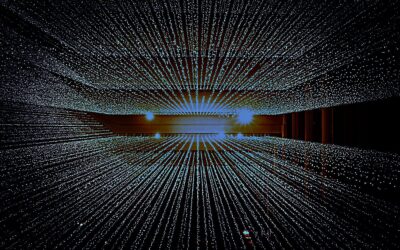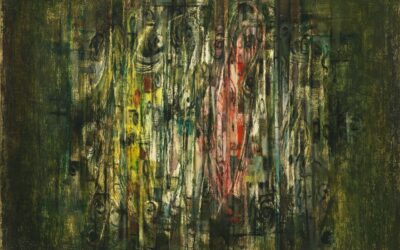What is PACT Therapy?
The Psychobiological Approach to Couple Therapy (PACT) is an innovative and integrative form of couples therapy developed by Dr. Stan Tatkin. PACT combines attachment theory, neuroscience, and arousal regulation to help couples create and maintain secure-functioning relationships. This approach focuses on moment-to-moment interactions between partners, emphasizing the importance of both verbal and non-verbal communication in relationship dynamics.
Is PACT Therapy Evidence-Based?
PACT is grounded in well-established psychological theories and neuroscientific research. While large-scale randomized controlled trials specifically on PACT are limited, the model draws from evidence-based concepts in attachment theory, neurobiology, and arousal regulation. Current evidence for PACT’s effectiveness comes primarily from case studies, clinical observations, and the positive outcomes reported by practitioners and couples. Ongoing research is being conducted to further validate the approach.
Who Developed PACT Therapy?
PACT was developed by Dr. Stan Tatkin, a clinician, researcher, teacher, and author. Dr. Tatkin’s journey to creating PACT began with his extensive experience in treating couples and his interest in integrating various psychological and biological approaches to understand and improve relationship dynamics.
Dr. Stan Tatkin’s Biography
Dr. Stan Tatkin received his PsyD in Clinical Psychology from Ryokan College in Los Angeles, California. His early career was marked by a deep interest in attachment theory and interpersonal neurobiology. Dr. Tatkin trained in various therapeutic modalities, including psychoanalytic therapy and Gestalt therapy. He was significantly influenced by the work of John Bowlby, Mary Ainsworth, and Allan Schore.
The Birth of PACT
The development of PACT was a result of Dr. Tatkin’s extensive clinical experience and his recognition of the need for a more integrative approach to couples therapy. He observed that many existing models of couples therapy didn’t adequately address the complex interplay between attachment patterns, neurobiology, and arousal regulation in relationships.
Dr. Tatkin’s breakthrough came when he began integrating his knowledge of attachment theory with recent advances in neuroscience and the study of psychobiological processes. He realized that to effectively treat relationship issues, a model needed to address both the psychological and physiological aspects of couple interactions.
What Are the Core Assumptions and Tenets of PACT Therapy?
PACT is built upon several key principles that guide its approach to relationship healing:
- Attachment-based: PACT recognizes that early attachment experiences significantly influence adult relationships and works to create secure-functioning partnerships.
- Neurobiologically informed: The model incorporates understanding of brain structure and function, particularly in relation to social behavior and bonding.
- Arousal regulation focus: PACT emphasizes the importance of partners’ ability to regulate their own and each other’s nervous system arousal.
- Moment-to-moment tracking: Therapists closely observe and work with real-time interactions between partners during sessions.
- Developmental perspective: PACT considers how each partner’s developmental history shapes their current relationship dynamics.
- Experiential approach: The therapy involves active, often challenging exercises designed to create new relational experiences.
- Focus on implicit communication: PACT pays close attention to non-verbal cues and unconscious communication between partners.
How Does PACT Conceptualize Relationships, Attachment, and the Brain?
Relationships in PACT
PACT views adult romantic relationships as attachment relationships, similar to the bond between a child and caregiver. It emphasizes the concept of a “couple bubble” – a mutually protective space where partners prioritize their relationship and each other’s wellbeing.
Attachment in PACT
PACT incorporates attachment theory, recognizing four main attachment styles: secure, anxious-ambivalent, avoidant, and disorganized. The goal is to help couples move towards a secure-functioning relationship, regardless of their individual attachment histories.
The Brain in PACT
PACT integrates neuroscientific understanding, particularly focusing on three key brain systems:
- The brainstem: Responsible for arousal regulation and basic survival functions.
- The limbic system: Involved in emotion, memory, and motivation.
- The cortex: Responsible for higher-order thinking, planning, and complex social behavior.
PACT therapists work with couples to understand how these brain systems interact and influence their relationship dynamics.
What Are PACT’s Interventions and Techniques?
PACT employs a variety of interventions and techniques to address relationship issues:
1. Cross-Modal Attention Switching
This technique involves helping partners shift attention between different sensory modalities (e.g., visual, auditory, kinesthetic) to enhance their ability to track and respond to each other’s cues.
2. Arousal Regulation Exercises
PACT therapists guide couples through exercises designed to help them regulate their own and each other’s nervous system arousal.
3. Staged Interactions
Therapists create controlled scenarios to observe and work with couple dynamics in real-time.
4. Threat-Based Role Play
Partners are guided through role-plays that activate their attachment systems, allowing for exploration and modification of threat responses.
5. Collaborative Reconstruction
Couples work together to understand and reframe their relational narratives, emphasizing shared responsibility and mutual support.
6. Eye Contact Exercises
Prolonged eye contact is used to enhance connection and practice co-regulation.
7. Voice and Prosody Work
Partners learn to use tone of voice and speech patterns to soothe and connect with each other.
8. Body Language Interpretation
Couples are taught to read and respond to each other’s non-verbal cues more effectively.
9. Psychoeducation
PACT therapists provide education on attachment, neurobiology, and arousal regulation to help couples understand their dynamics.
10. Mindfulness Practices
Couples learn mindfulness techniques to enhance present-moment awareness and improve their ability to track each other’s states.
What Are the Goals and Stages of Treatment in PACT?
The overarching goal of PACT therapy is to help couples create and maintain secure-functioning relationships. This process involves several key objectives:
- Enhancing partners’ ability to regulate each other’s nervous systems
- Improving explicit and implicit communication
- Developing a shared understanding of relationship dynamics
- Creating a strong “couple bubble” of mutual support and protection
- Resolving attachment injuries and building secure attachment
The stages of treatment in PACT are not rigidly defined, as the therapy is tailored to each couple’s needs. However, a general progression might include:
- Assessment: Gathering information about individual and relationship histories, attachment styles, and current dynamics.
- Psychoeducation: Teaching couples about attachment, neurobiology, and arousal regulation.
- Experiential Work: Engaging couples in exercises and interactions to create new relational experiences.
- Integration: Helping couples apply new insights and skills to their daily lives.
- Maintenance: Supporting couples in maintaining their secure-functioning relationship over time.
In What Contexts is PACT Usually Practiced?
PACT is primarily practiced in outpatient mental health settings, including private practice and specialized couples therapy clinics. It can be applied in both short-term intensive formats and longer-term therapy. PACT is particularly well-suited for:
- Couples experiencing chronic conflict or disconnection
- Partners with trauma histories or attachment injuries
- Couples facing significant life transitions or stressors
- Premarital counseling
- Couples seeking to deepen their connection and intimacy
Additionally, some PACT practitioners integrate elements of the approach into individual therapy or use it in group settings for couples.
What is Unique and Different About PACT Therapy?
Several aspects set PACT apart from other couples therapy approaches:
- Integration of Attachment, Neuroscience, and Arousal Regulation: While other models may incorporate elements of these, PACT’s comprehensive integration is distinctive.
- Focus on Real-Time Interactions: PACT’s emphasis on moment-to-moment tracking and intervention is more pronounced than in many other approaches.
- Psychobiological Perspective: The model’s strong focus on the interplay between psychological and biological processes is unique.
- “Couple Bubble” Concept: PACT’s emphasis on creating a mutually protective relational space is a distinctive feature.
- Use of Controlled Threat: The deliberate activation of attachment systems through staged interactions is a unique aspect of PACT.
- Emphasis on Implicit Communication: While many approaches focus on verbal communication, PACT places equal importance on non-verbal cues.
How Does PACT Compare to Other Couple Therapy Models?
PACT shares similarities with and draws inspiration from several other couple therapy approaches:
- Emotionally Focused Therapy (EFT): Both PACT and EFT are attachment-based, but PACT places more emphasis on neurobiology and arousal regulation.
- Gottman Method: Both approaches use detailed observation of couple interactions, but PACT has a stronger focus on psychobiological processes.
- Imago Relationship Therapy: Both models consider developmental history, but PACT integrates this with neuroscientific understanding.
- Internal Family Systems (IFS): Both approaches consider multiple “parts” of an individual, but PACT focuses more on the couple as a unit.
- Sensorimotor Psychotherapy: Both models integrate somatic awareness, but PACT applies this specifically to couple dynamics.
- Cognitive-Behavioral Couple Therapy: While both address behavioral patterns, PACT places more emphasis on unconscious processes and physiological states.
What Cultural or Economic Forces Influenced PACT’s Development?
Several cultural and economic factors contributed to the development and growth of PACT:
- Advances in Neuroscience: The rapid development of brain imaging technologies and neuroscientific understanding provided a scientific foundation for PACT’s approach.
- Increasing Recognition of Attachment Theory: Growing awareness of the importance of attachment in adult relationships created a receptive environment for PACT.
- Rise of Integrative Approaches: The trend towards integrating multiple therapeutic modalities aligned with PACT’s comprehensive approach.
- Changing Relationship Dynamics: Evolving societal expectations around relationships and marriage created a need for more sophisticated therapeutic approaches.
- Emphasis on Mind-Body Connection: Increasing recognition of the interplay between psychological and physiological processes in mental health supported PACT’s psychobiological perspective.
- Economic Pressures in Mental Health: The need for effective, relatively short-term interventions in mental health treatment aligned with PACT’s focused, experiential approach.
Timeline of PACT’s Development and Dissemination
- 1980s-1990s: Dr. Stan Tatkin begins his exploration of attachment theory and interpersonal neurobiology.
- Early 2000s: Dr. Tatkin starts integrating his knowledge of attachment theory, neuroscience, and arousal regulation in his work with couples.
- 2005-2010: The foundational concepts of PACT begin to take shape as Dr. Tatkin refines his approach through clinical practice and teaching.
- 2011: Publication of “Wired for Love: How Understanding Your Partner’s Brain and Attachment Style Can Help You Defuse Conflict and Build a Secure Relationship” by Stan Tatkin, introducing PACT concepts to a wider audience.
- 2012: PACT Institute is established to formalize training and certification in the approach.
- 2013-2015: PACT training programs begin to be offered internationally.
- 2016: Publication of “Wired for Dating: How Understanding Neurobiology and Attachment Style Can Help You Find Your Ideal Mate” by Stan Tatkin, extending PACT principles to dating and mate selection.
- 2018: Release of “We Do: Saying Yes to a Relationship of Depth, True Connection, and Enduring Love” by Stan Tatkin, further popularizing PACT concepts.
- 2019-Present: PACT continues to gain recognition in the couples therapy field, with ongoing research and refinement of the model.
Is PACT Evidence-Based?
While PACT is grounded in well-established psychological theories and neuroscientific research, large-scale empirical studies specifically on PACT are still limited. The current evidence base for PACT includes:
- Case Studies: Numerous case studies have documented positive outcomes for couples treated with PACT.
- Clinical Observations: Experienced PACT practitioners report significant improvements in their clients’ relationships.
- Theoretical Foundation: PACT’s theoretical underpinnings are supported by research in attachment theory, neurobiology, and arousal regulation.
- Ongoing Research: Several studies are currently underway to evaluate PACT’s effectiveness in various populations and contexts.
It’s important to note that the complexity of couple therapy and PACT’s integrative approach makes it challenging to study using traditional randomized controlled trial methodologies. However, this is a common challenge for many psychotherapeutic approaches, particularly in the field of couples therapy.
How Might PACT be Integrated into Modern Therapeutic Practice?
PACT offers several valuable concepts and techniques that modern therapists could integrate into their existing practices:
- Psychobiological Perspective: Incorporating understanding of the interplay between psychological and physiological processes can enhance various therapeutic approaches.
- Moment-to-Moment Tracking: Paying close attention to real-time interactions can be valuable in both individual and couple therapy contexts.
- Arousal Regulation Focus: Helping clients understand and manage their nervous system arousal can be beneficial across various therapeutic modalities.
- “Couple Bubble” Concept: The idea of creating a mutually protective relational space can be applied in various relationship contexts.
- Integration of Attachment and Neuroscience: Understanding how attachment patterns and brain functioning interact can inform case conceptualization and treatment planning across modalities.
- Emphasis on Implicit Communication: Paying attention to non-verbal cues and unconscious communication can enhance therapeutic effectiveness in various contexts.
By selectively integrating these elements, therapists can enhance their existing practices and offer more comprehensive care to their clients, particularly those dealing with relationship issues.
Bibliography and Further Reading
- Tatkin, S. (2011). Wired for Love: How Understanding Your Partner’s Brain and Attachment Style Can Help You Defuse Conflict and Build a Secure Relationship. New Harbinger Publications.
- Tatkin, S. (2016). Wired for Dating: How Understanding Neurobiology and Attachment Style Can Help You Find Your Ideal Mate. New Harbinger Publications.
- Tatkin, S. (2018). We Do: Saying Yes to a Relationship of Depth, True Connection, and Enduring Love. Sounds True.
- Tatkin, S. (2012). Your Brain on Love: The Neurobiology of Healthy Relationships. Sounds True.
- Solomon, M. F., & Tatkin, S. (2011). Love and War in Intimate Relationships: Connection, Disconnection, and Mutual Regulation in Couple Therapy. W. W. Norton & Company.
- Fishbane, M. D. (2013). Loving with the Brain in Mind: Neurobiology and Couple Therapy. W. W. Norton & Company.
- Johnson, S. M. (2008). Hold Me Tight: Seven Conversations for a Lifetime of Love. Little, Brown Spark.
- Siegel, D. J. (2012). The Developing Mind: How Relationships and the Brain Interact to Shape Who We Are. Guilford Press.
- Cozolino, L. (2014). The Neuroscience of Human Relationships: Attachment and the Developing Social Brain. W. W. Norton & Company.
- Schore, A. N. (2019). Right Brain Psychotherapy. W. W. Norton & Company.
- Porges, S. W. (2011). The Polyvagal Theory: Neurophysiological Foundations of Emotions, Attachment, Communication, and Self-regulation. W. W. Norton & Company.
- Gottman, J. M., & Silver, N. (2015). The Seven Principles for Making Marriage Work: A Practical Guide from the Country’s Foremost Relationship Expert. Harmony.
- Hendrix, H., & Hunt, H. L. (2019). Getting the Love You Want: A Guide for Couples. St. Martin’s Griffin.
- Tatkin, S. (2014). Love and War in Intimate Relationships: A Psychobiological Approach to Couple Therapy. In The Wiley-Blackwell Handbook of Family Psychology (pp. 743-758). Wiley-Blackwell.
- Fishbane, M. D. (2007). Wired to Connect: Neuroscience, Relationships, and Therapy. Family Process, 46(3), 395-412.
- Tatkin, S. (2009). A Psychobiological Approach to Couple Therapy: Integrating Attachment and Personality Theory as Interchangeable Structural Components. Psychologist-Psychoanalyst, 29(3), 7-13.
- Solomon, M. F. (2009). Emotion in Romantic Partners: Intimacy Found, Intimacy Lost, Intimacy Reclaimed. In D. Fosha, D. J. Siegel, & M. F. Solomon (Eds.), The Healing Power of Emotion: Affective Neuroscience, Development & Clinical Practice (pp. 232-256). W. W. Norton & Company.
- Tatkin, S. (2015). Psychobiological Approach to Couple Therapy (PACT). In Encyclopedia of Couple and Family Therapy. Springer, Cham.
- Zeifman, D., & Hazan, C. (2008). Pair Bonds as Attachments: Reevaluating the Evidence. In J. Cassidy & P. R. Shaver (Eds.), Handbook of Attachment: Theory, Research, and Clinical Applications (2nd ed., pp. 436-455). Guilford Press.
- Mikulincer, M., & Shaver, P. R. (2007). Attachment in Adulthood: Structure, Dynamics, and Change. Guilford Press.


























0 Comments